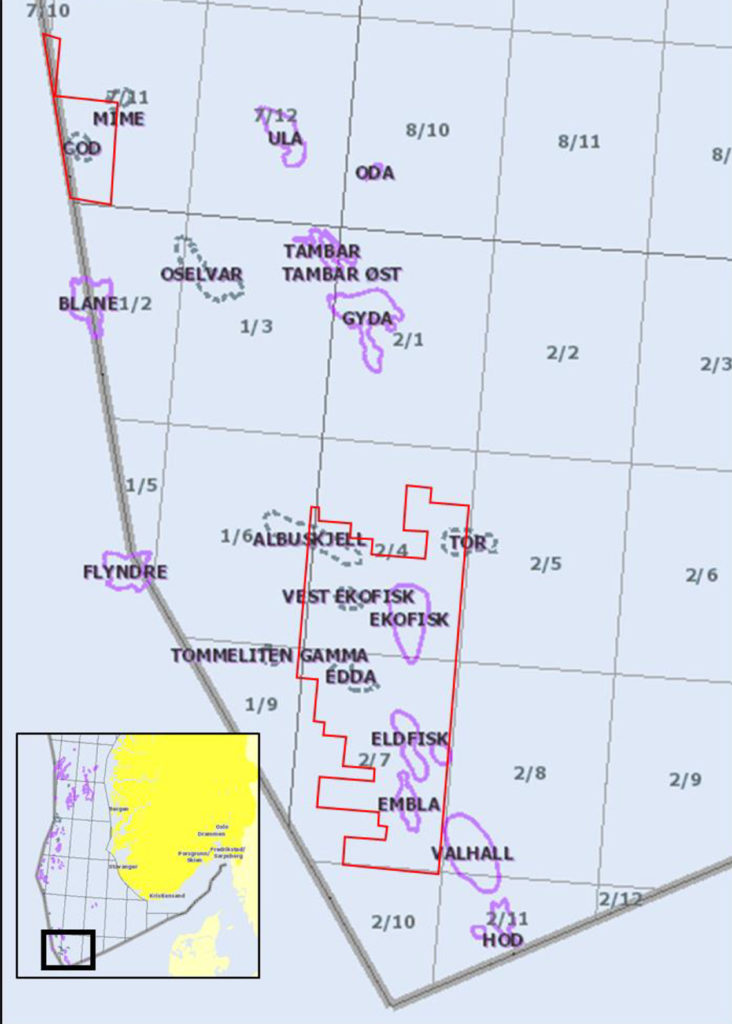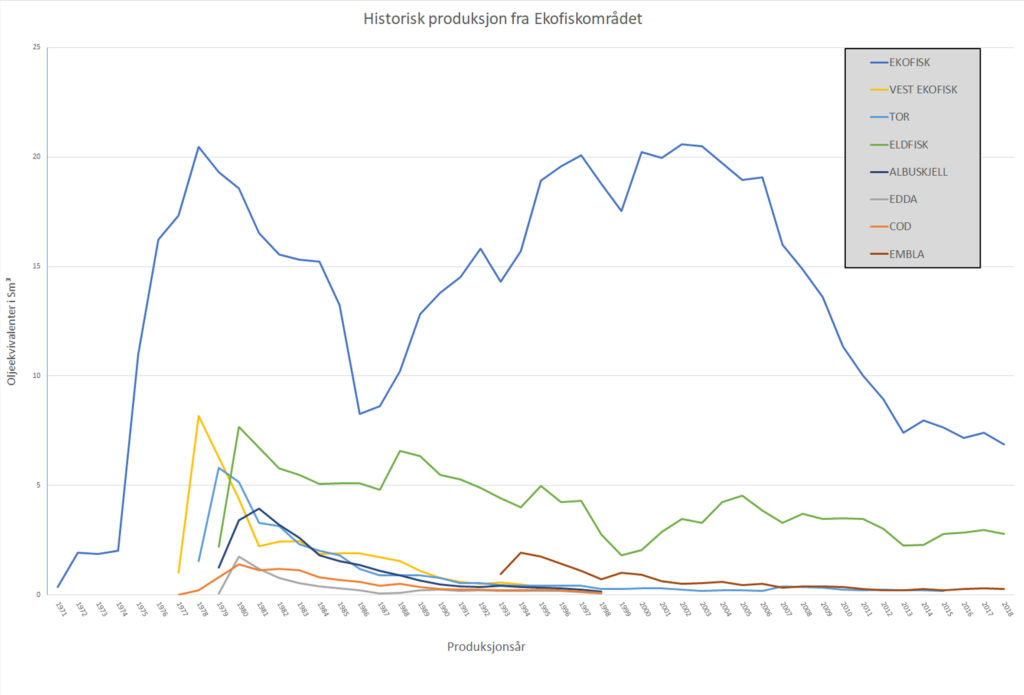What’s in a name

 Kjære barn har samme navn, kart
Kjære barn har samme navn, kartPrimarily located in production licence PL 018, along with Ekofisk, the other seven fields are West Ekofisk, Tor, Eldfisk, Albuskjell, Edda, Cod and Embla.
Furthermore, six of the eight – with Embla and Cod as the exception – comprise two geological formations. One is known as the Ekofisk formation, with the Tor formation as the other. See the article on sea scurf.
The graph in figure 2, which presents collective production of oil, gas and condensate over time in million standard cubic metres of oil equivalent (scm oe), shows Ekofisk’s dominant position – both historically and today.
 Kjære barn har samme navn, grav
Kjære barn har samme navn, gravWith the exception of four years, overall output from the seven other fields has never achieved the same volume as Ekofisk’s own production.
The effect of waterflooding on Ekofisk, which got going seriously in 1987, can be clearly seen in the production curve. This rose from less than 10 million scm oe per annum to more than 20 million.
On 1 July 2019, operator ConocoPhillips submitted a plan for development and operation (PDO) which covered reopening the Tor field (Tor II).
This will involve the investment of about NOK 6 billion, with a planned production start in late 2020, and is expected to yield an estimated 10 million scm oe.
Furthermore, the licensees have initiated concept studies for further development of the northern flank of Eldfisk (Eldfisk II). Both subsea solutions and a simple unmanned platform are under consideration.[REMOVE]Fotnote: https://petro.no/nyheter/conocophillips-vurderer-a-bygge-ny-plattform-pa-eldfisk-nord
Development of the Tommeliten Alpha formation, which has only ranked as a discovery so far, is also being assessed.[REMOVE]Fotnote: https://petro.no/nyheter/forbereder-mulig-utbygging-tommeliten-alpha
